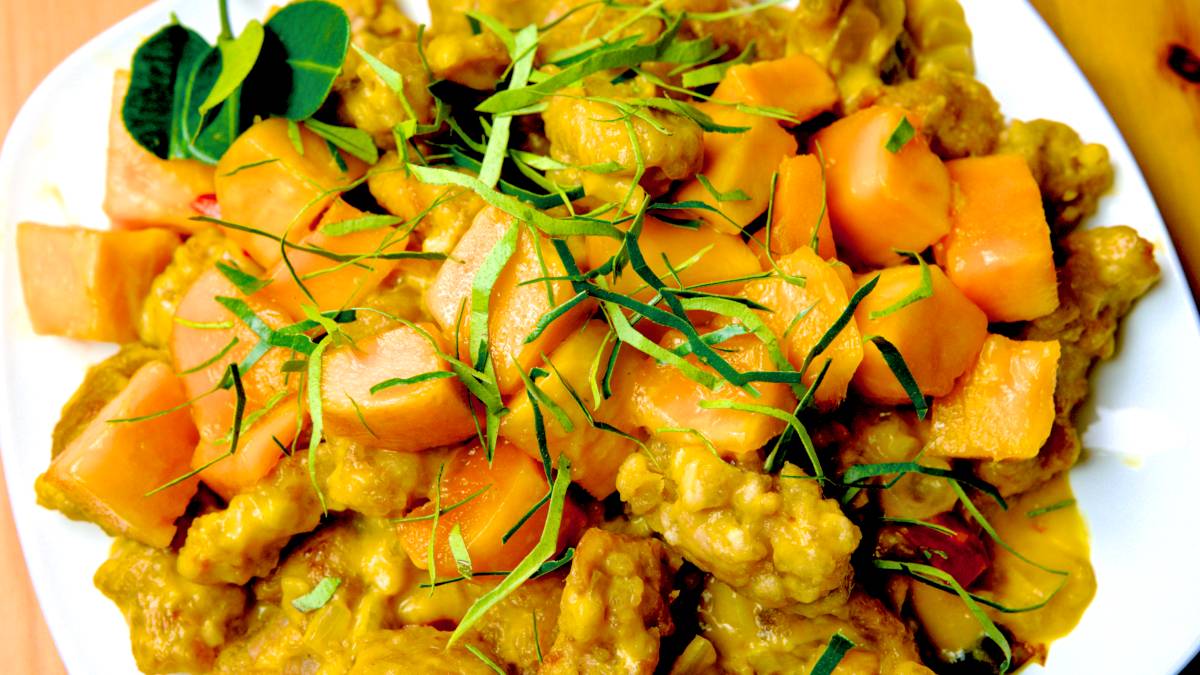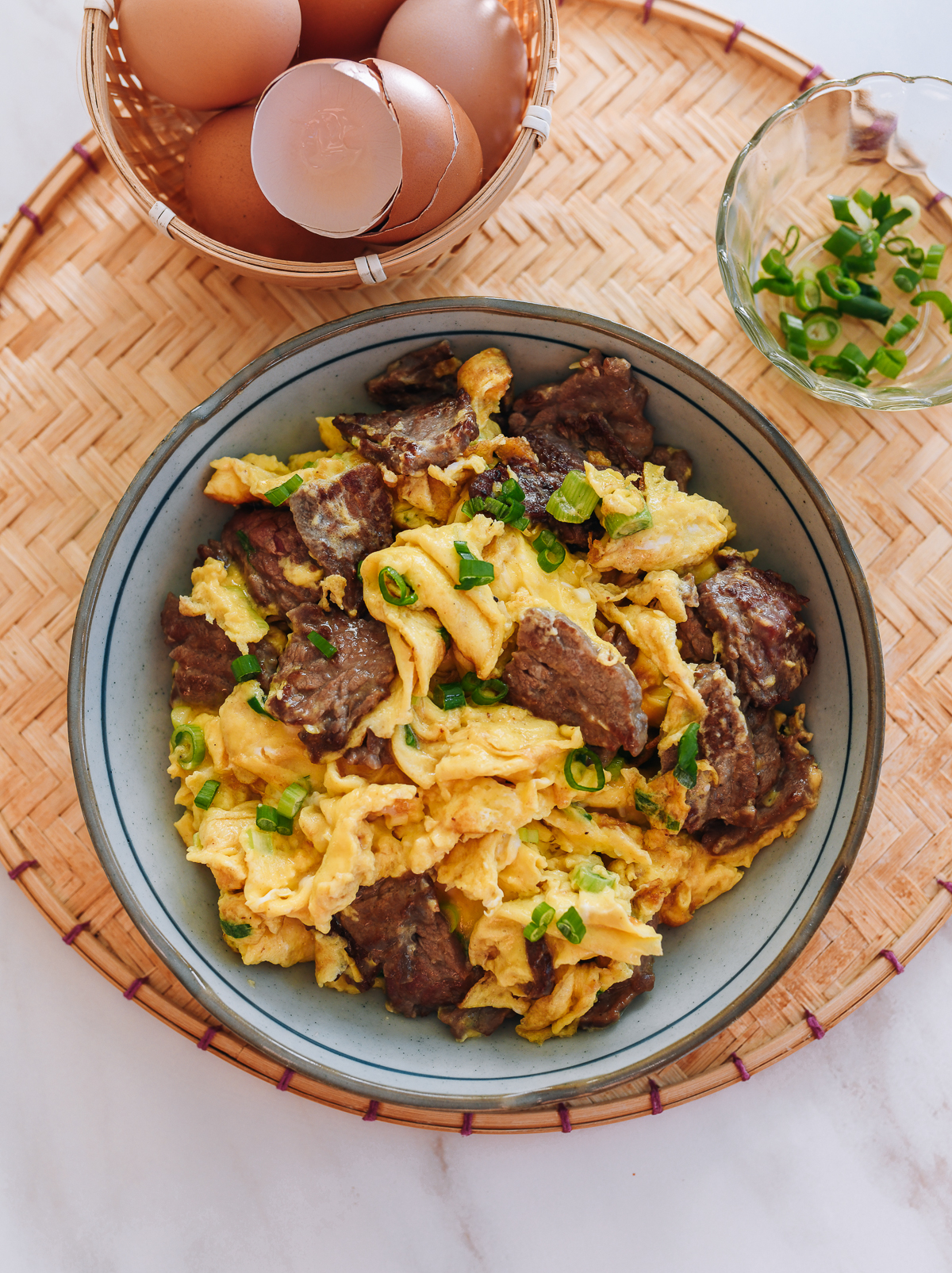This comprehensive guide to making egg foo young allows you to choose your favorite protein. Having cooked countless orders of this dish in my parents’ Chinese restaurant, I understand the nostalgia that comes with it. If you’ve been searching for that authentic taste but can’t find a restaurant version or recipe that hits the mark, you’re in the right place!
Discover the secrets behind our classic egg foo young, learn how to create the perfect gravy, and explore a lighter pan-fried version using the same batter. This page serves as your ultimate resource for all things egg foo young from The Woks of Life!
What is Egg Foo Young?
Egg foo young is a delightful Chinese omelet crafted from eggs, protein, and vegetables. The omelet patties are deep-fried, resulting in a golden, airy, and fluffy texture that beautifully contrasts with juicy pork, shrimp, chicken, or beef, along with fresh bean sprouts and scallions. In American Chinese restaurants, it is typically served smothered in a rich brown gravy over a bed of white rice.



This dish is known by various spellings, including Egg Foo Yung, Egg Fu Yung, or egg foo yong. Regardless of how you spell it, the essence remains the same, though finding a classic American Chinese takeout version of egg foo young can be quite a challenge these days!
Egg foo young enjoyed immense popularity throughout the 20th century. If you grew up savoring Chinese cuisine in the 50s, 60s, and 70s, you likely hold fond memories of this dish. Although it began to wane in popularity during the 80s and 90s, Shrimp Egg Foo Young remained one of the top orders at my parents’ Chinese restaurant, which opened in 1983.
Today, it’s rare to find it on Chinese takeout menus, alongside Americanized dishes like Chow Mein and Chop Suey, as well as other classic yet seldom-seen items like Butterfly Shrimp with Bacon and Shrimp Toast. Egg Foo Young has undeniably become a nostalgic favorite.
The Classic Egg Foo Young: Your Search is Over!
The scarcity of egg foo young today contributes to the difficulty of finding a recipe that captures the flavors you remember. Many have attempted to replicate the taste but lack the authentic restaurant techniques necessary for crafting those perfectly fried egg patties.
Many home cooks are unaware that egg foo young patties are traditionally deep-fried. While many recipes suggest cooking them in a skillet, restaurant-style egg foo young is deep-fried in a wok filled with oil, resulting in fluffy and crispy patties.

This recipe is a cherished one from my parents’ restaurant, Sun Hing. It employs the original deep-frying method, which not only achieves the authentic taste but also makes the egg foo young pancakes lighter and speeds up the cooking process.
Countless readers have tried our egg foo young and exclaimed, “THIS IS IT!” Give this recipe a try, and your search will come to an end as well.
However, if you prefer not to deep-fry your egg foo young in the traditional manner, we also provide pan-frying instructions. Pan-fried egg foo young is still delicious, although it resembles a regular omelet more closely.
The Original Egg Foo Young Recipe?
The original egg foo young, or 芙蓉蛋 (foo yong daan in Cantonese or fúróng dàn in Mandarin), is a Cantonese dish that is pan-fried (though not without a generous amount of oil) rather than deep-fried. We use many of the same ingredients—eggs, char siu roast pork, shrimp, and bean sprouts. Chinese chives add a delightful flavor and sweetness. While there’s no gravy, a light drizzle of sauce can be served alongside.
Sarah created this original Hong Kong-style Furong Omelet recipe for our cookbook, The Woks of Life: Recipes to Know and Love from a Chinese American Family. Be sure to grab a copy and check it out! It’s one of our favorite recipes from the book.
A Word on Egg Foo Young Gravy
The rich brown gravy is an essential component of any plate of egg foo young. I always look forward to drizzling extra gravy over the egg patties during my meal!
We utilize both a flour-based roux and cornstarch to thicken the gravy. The roux adds depth, while the cornstarch contributes a silky smoothness, preventing a thick skin from forming on top.


This post includes the gravy recipe, but you can find even more detailed information (including gluten-free adaptations, chicken stock alternatives, and storage and reheating instructions) in our dedicated egg foo young gravy guide.
Consider this recipe a blueprint for creating any egg foo young variation you desire—be it shrimp, roast pork, chicken, beef, or even tofu.
Our step-by-step instructions and videos below will guide you through properly mixing the ingredients (mixing too much or too soon can lead to issues!), how to carefully introduce the batter into the frying oil, an alternative pan-frying method, and how to handle different types of protein.
Let’s get started on making egg foo young!
How to Make Egg Foo Young: Recipe Instructions
Prepare Your Protein:
You’ll need 8 ounces of cooked protein such as Chinese roast pork/char siu or pan-fried tofu (or 10 ounces of raw protein, such as shrimp, boneless skinless chicken thighs, boneless pork shoulder, or beef flank steak, sirloin, or chuck). You will also need an additional teaspoon each of cornstarch, oil, and oyster sauce for velveting. No velveting is needed for shrimp.
If using cooked protein, such as Chinese BBQ Pork (Char Siu), pan-fried tofu, or leftover cooked steak, cut it into small cubes and set aside.
If using shrimp, roughly chop it and set it aside. There’s no need to pre-cook it.



If using raw chicken, pork, or beef, cut it into small cubes. In a medium bowl, toss the cubed meat with 1 teaspoon each of cornstarch, neutral oil, and oyster sauce. For beef, you can also add ⅛ teaspoon of baking soda as an optional tenderizer. Marinate for 15-30 minutes. Heat a wok over high heat until it just begins to smoke. Add a couple of tablespoons of oil to coat the wok and sear the meat for 1 minute per side. Then stir-fry for 1 minute, until it’s 80% cooked through. Remove it from the wok and set aside to cool.


Make the Gravy:
In a wok or saucepan, heat 2 tablespoons of neutral oil over medium heat. Whisking constantly, add the flour, turmeric, and paprika to create a roux.


Continue whisking for 15-20 seconds, then add the garlic and shallot, whisking for another 30 seconds.

Next, whisk in 3 cups of chicken stock and bring the mixture to a simmer. Add the oyster sauce, light soy sauce, dark soy sauce, sesame oil, and white pepper.


Combine the cornstarch with the remaining ¼ cup of chicken stock (or use water) to create a slurry. Slowly stir in two-thirds of the mixture.

Allow the gravy to cook and thicken for 30 seconds. Add more slurry if necessary, until the gravy is thick enough to coat a spoon. Adjust the seasoning with additional salt or soy sauce to taste.

Set the gravy aside and reheat it just before serving.
Make the Batter & Fry the Patties:
In a wok or deep pot, add your frying oil (it should be a few inches deep). Heat the oil to 350°F/175°C. The oil temperature will drop when you add the egg foo young, so the optimal frying temperature is 325°F/160°F. Use a thermometer to check and maintain the temperature. When your oil is close to the target temperature (NOT BEFORE), prepare your batter.
Combine your cooked protein (or shrimp), onion, and bean sprouts in a mixing bowl. Add the eggs, sesame oil, and 1 teaspoon of cornstarch. Use a large soup ladle to gently fold the mixture until just combined. The eggs should appear slightly beaten and only just mixed with the other ingredients. Avoid overmixing.



By now, your oil should be at the right temperature.
Ladle about ¾ cup of the mixture, tilting the ladle close to the oil, starting from the edge where the oil meets the wok. Slowly pour the batter in, ensuring the ladle barely touches the oil. Prolonged contact between the ladle and the oil will cause the egg to cook and stick, preventing a smooth drop for the next patty. Once the patty releases from the ladle, you can push it away from the edge. Repeat to drop in two to three scoops of the mixture. Clean and dry the ladle if necessary.

Fry the patties for 40 seconds. Gently ladle some hot oil over each uncooked patty to help them set more quickly. When each patty is firm and turning golden brown on the bottom, flip them (in the same order you dropped them in). Fry for an additional minute.

Transfer each patty to a mesh strainer (first in, first out), giving it a few taps and a gentle squeeze to remove excess oil. Place each patty on a wire rack (or paper towel) on a sheet pan to drain. Repeat until all patties are cooked.

Serve your patties over steamed rice. Ladle the hot gravy over the top and sprinkle with scallions. Enjoy!

Deep-Frying vs. Pan-Frying
If you prefer not to deep-fry, you can shallow-fry your egg foo young in a skillet or even pan-fry it without excess oil. The result will resemble a regular omelet.
To do this, heat a non-stick skillet over medium-high heat. Alternatively, use a carbon steel, stainless steel, or cast iron skillet, heating it until a splash of water beads and dances in the pan, creating a non-stick surface. Spread 1-3 tablespoons of oil in the pan (1 tablespoon per patty), and ladle ¾ cup of the batter into the pan for each patty. Reduce the heat to medium and cook for 2 to 3 minutes, or until golden brown on the bottom. Flip and cook for another 1-2 minutes. Repeat with the remaining patties.

Top Egg Foo Young Tips & Restaurant Secrets:
- Use an instant-read thermometer to accurately check the oil temperature. Too high, and the patties will burn; too low, and they may fall apart or become greasy!
- Mix the batter right before you’re ready to cook the patties. Preparing the batter in advance allows the egg protein to relax, resulting in a looser batter that won’t hold together in the oil.
- Avoid overmixing the egg foo young batter. Over-mixing will make the mixture too watery, preventing it from forming a patty during frying.
- Do not add any salt or seasonings to the mixture, as this may cause the patties to fall apart during frying!
- When ladling the batter into the oil, avoid letting the ladle touch the oil. The egg may cook on contact and stick to the ladle.
- After frying, press the patties between the mesh strainer/spider strainer and the bottom of a spatula to squeeze out excess oil.
Our Other Egg Foo Young Recipes:
If you have a specific variation of egg foo young in mind, check out our recipes for three of the most popular versions:
We also have videos available for you to check out!





